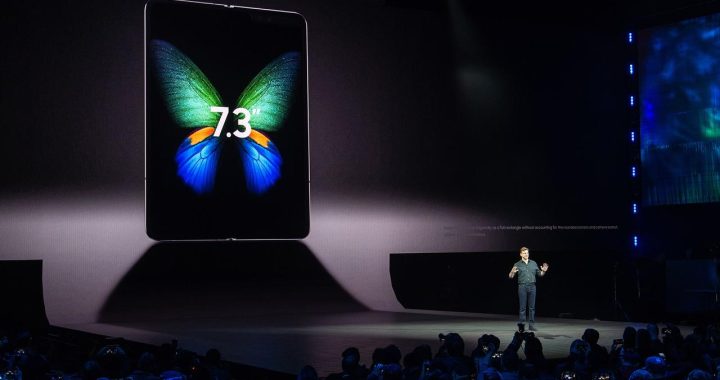It’s been dubbed “peelgate”, the reports of early units of Samsung’s Fold disintegrating in the hands of reviewers. Samsung says it sent a limited number of Folds to US media to review, but it would now wish it hadn’t. The Verge, Bloomberg and CNBC experienced issues such as a tear at the top of the hinge, a bulging screen, and the screen not working at all after two day’s use.
One problem, but not the whole problem, was caused by reviewers removing a plastic film on top of the display, wrongly thinking it was a peelable screen protector when it was a necessary layer.
#Peelgate is now a popular search term on Twitter.
This is another big embarrassment for Samsung, which in 2016 suffered the ignominy of Galaxy Note7 smartphone batteries exploding and catching fire. Samsung offered phones with replacement batteries but they were defective, too. The Note7 was axed.
Fortunately, we haven’t seen any rerun of exploding batteries, but there is an unsettling parallel between these two happenings.
The issue is Samsung’s aggressive culture to be first to market at all costs. That seems to include taking short cuts with the technology.
It pulled out all stops to release the Note7 with its battery defect on August 19, 2016, just three weeks before Apple launched its iPhone 7 and iPhone 7 Plus. It wanted to beat Apple to the punch.
Now it has been out to beat Huawei’s launch of its foldable Mate X in its home market of China.
| Samsung’s folding phone fiasco |
Sammobile, a usually reliable source of Samsung news, yesterday said Samsung was now delaying its China launch of the Fold, although it said Samsung had blamed the move on the venue. The Wall Street Journal reports that Samsung has now officially delayed its US launch. There is no specific date for a rescheduled launch.
During our preview of the Huawei Mate X, I had no impulse to remove the top plastic layer; it didn’t seem like a screen protector to me, and the unit was robust during our admittedly limited time with it. We’re yet to see how it performs over the longer haul.
Designers are split on how to efficiently fold a folding phone. Should they fold outwards, inwards, or should there be multiple folds?
It turns out that the four folding phones promoted so far take different approaches to this.
Huawei’s is an outwardly folding phone with a single vertical crease. You fold the two edges of the combined 8-inch display downwards, which allows each side to act independently as a phone display.
The back display also contains the camera lenses, so if you flip the phone over, you can take selfies with the same four lens/sensor setup you use for regular photos when unfolded. There’s no danger of the two screens touching when folded together.
Samsung has gone the opposite direction with the two sides folding upwards and inwards.
The Samsung Galaxy Fold’s 7.3-inch combined screen is supported by a dual-axis hinge with interlocking gears which “clicks” so you know you have locked it in place.
Folding inwards means you can’t use the phone in its folded state unless there’s a screen on the other side. And the hinge design means the phone doesn’t fold exactly flush.
Samsung provides a separate 4.6-inch display on the rear side.
Chinese brand Royole’s FlexPai has a combined 7.8-inch screen and folds outwards like the Mate X but uses a different folding mechanism. Rather than a discrete hinge there’s a vertical band on the back that folds more in a curve. Royole says the folding mechanism is robust enough to be bent more than 200,000 times.
Royole is the first to market, but initial FlexPai units had a reputation of being rough and ready. It’s now taking pre-orders for a faster version 2 that hopefully addresses these issues.
Finally there’s Xiaomi’s double folding phone. When you fold the left and right edges backwards you are left with the centre section of the display as a defacto normal sized smartphone. We haven’t seen this in the flesh but a Xiaomi video shows streaming media continuing to play after folding.
Published in The Australian newspaper
